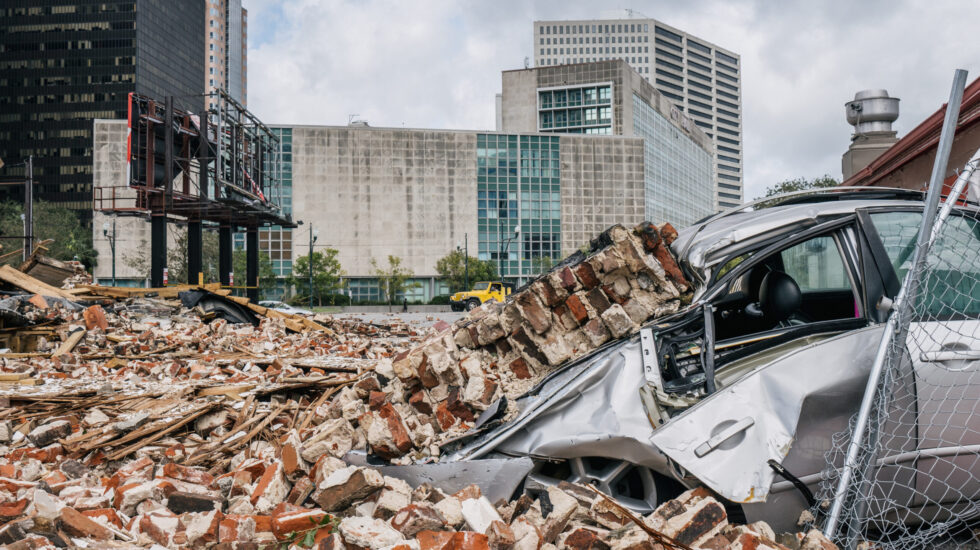The Gulf Coast was battered by Hurricane Ida. The fifth strongest storm ever to hit the U.S. mainland knocked down homes, wrecked the power grid, and caused a highway to collapse.
Here’s a rundown of what we know about the hurricane’s aftermath:
- 1 million homes and business are without power
- 2,000 miles of transmission lines and 216 substations were knocked out of service
- 25,000 utility workers from 32 states are on the ground trying to repair “catastrophic” damage to the power grid
- 18 water systems were knocked out, affecting 312k people
- Another 329k area residents are under boil advisories
- There’s no reliable cell phone service
- 911 call centers are experiencing outages
- 690 people were rescued on Monday via boats, helicopters, and high-water trucks
- 5,000 National Guard troops have been deployed to help with rescue operations; that number is expected to double
- 5 hospitals have either evacuated patients or are seriously considering evacuation
- New Orlean’s Tulane University has cancelled classes for two weeks – online classes until October 11th
- In Mississippi, torrential rain caused a hole in a highway that measures 50-60 feet long and 20-30 feet deep
- Two people died after driving into the hole, another 10 were injured
“I can’t tell you when the power is going to be restored. I can’t tell you when all the debris is going to be cleaned up and repairs made,” Louisiana Gov. John Bel Edwards said Monday. “But what I can tell you is we are going to work hard every day to deliver as much assistance as we can.”
Bel Edwards added, “If there’s a silver lining, and today it’s kind of hard to see that, it is that our levee systems really did perform extremely well.”
“Everything is performing as designed,” said Rene Poche, spokesman for the U.S. Army Corps of Engineers in New Orleans.
“There have been no reports of major breaches of the levees and flood walls. Despite widespread power outages, redundant pump systems are continuing to expunge excess water,” reports The Wall Street Journal.
Thus far, there have been just four confirmed storm-related deaths in Louisiana and Mississippi, although officials caution that fatalities are likely to rise as rescue workers go door-to-door checking on residents who decided to ride out the storm. Hurricane Katrina’s death toll surpassed 1,800.
Still, Ida’s 150 mph winds brought the region to its knees – and has made it temporarily uninhabitable.
New Orleans Mayor LaToya Cantrell urged residents who evacuated prior to Ida to steer clear of the region.
“Now is not the time for re-entry into the city of New Orleans,” she said at a news conference on Monday afternoon, later adding: “Again, if you evacuated, stay where you are. We will notify you when it is safe to go home.”
For those who are still in the city, extreme heat will likely compound their troubles. The National Weather Service predicts it may reach 103 degrees in the area on Tuesday.



